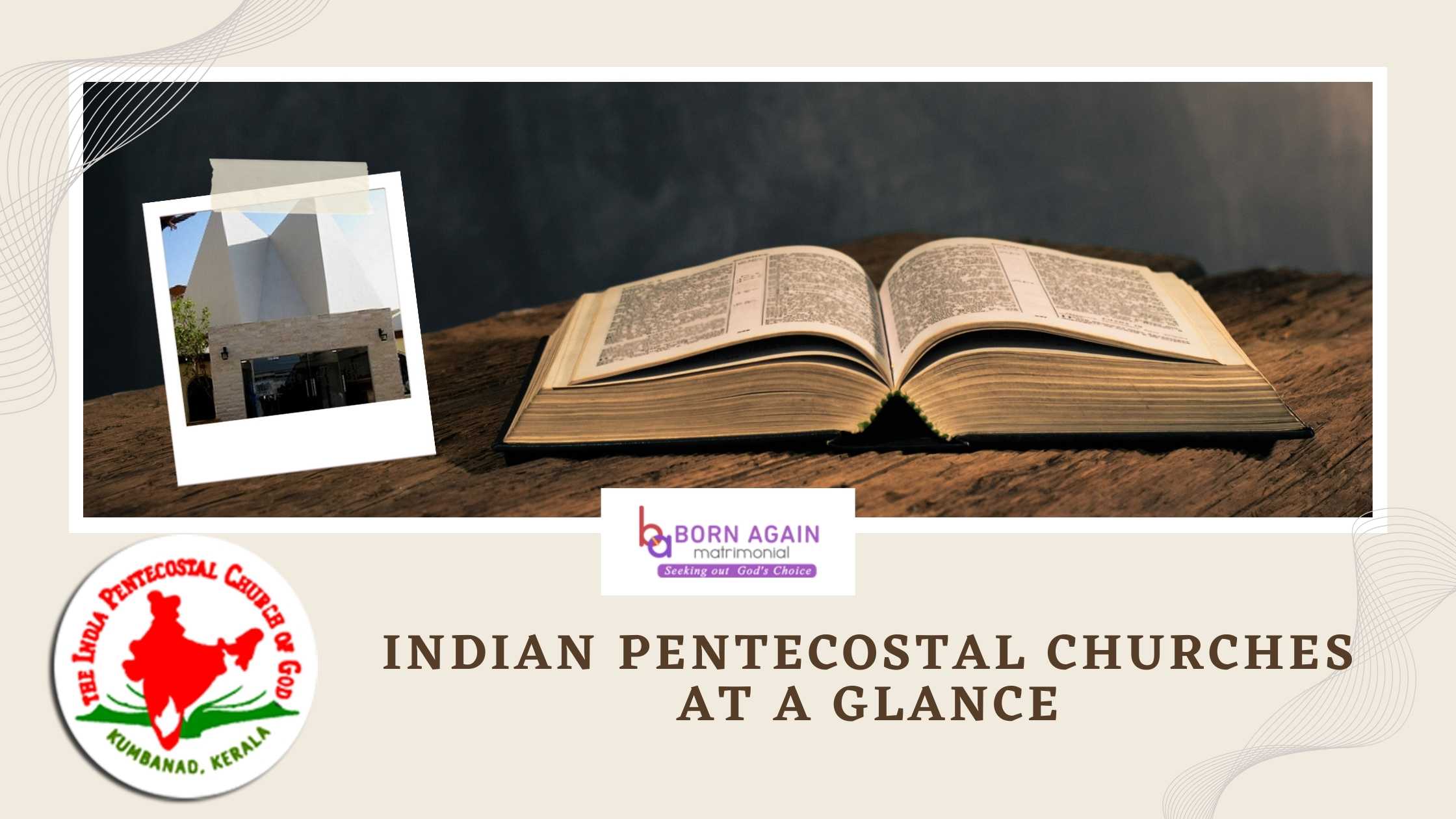
A Quick Glance of the Indian Pentecostal Church (IPC)
Pentecostalism was introduced in Kerala by a US-German missionary called George Burg in the beginning of the 20th Century. Many evangelical low churches followed reformed puritan practices that period and they belonged to Kerala Brethren. It’s believed that Mahakavi Kunnampurathu Varghese Simon (K.V. Simon), Volbrecht Nagel, Anthony Norris Groves were the key figures behind these churches. Meanwhile, the beginning of Indian Pentecostal Church (IPC) is linked to K E Abrham from Kerala Brethren sect. Born to Jacobite parents at Mulakuzha in Alappuzha on March 1, 1899, Abraham converted to Pentecostalism in 1906. He was rebaptised in 1916 by K.V. Simon.
Simultaneously, western missionaries visited South India to propagate Pentecostalism. As a result, many people embraced Pentecostalism. In 1923, Puritans expelled Abraham as he had received Pentecostal faith. He also authored a book titled “Baptism of the Holy Spirit,” calling for a second baptism. Close on the heels of Abraham’s intense preaching and propagation of the Pentecostal message, many prayer groups cropped up in the erstwhile Travancore. By 1924, many churches were set up and monthly gatherings were organised.
These newly-formed churches were christened “Thennindia Pentecosthu Daivasabha” (The South India Pentecostal Church of God) in July 1924. Significantly, these independent churches were in collaboration with Rev. Robert F. Cook, who spearheaded "Thennindia Poorna Suvishesha Daivasabha," and Mary Chapman, the first Assemblies of God missionary in South India. In 1924, Rev. Cook left for the US. Following a dissent with Assemblies of God, Abraham severed his relationship with it for a brief period. After Rev. Cook’s return to Kerala, Pastor Abraham and the former merged their organisations together. Thus, “Malankara Pentecost Daivasabha” was born. This tie-up enabled the church grow rapidly and many people accepted the new faith.
In 1929, “Malankara Pentecost Daivasabha” entirely detached from Assemblies of God owing to the restrictions regarding the ministerial areas for the activities of the missionaries. But in January 1930, Abraham decided to snap his ties with Rev. Cook after the realisation that an apostolic life won’t be possible by hobnobbing with the latter. Freedom of local churches was also another reason behind his decision. “The South India Pentecostal Church of God” was renamed “the Indian Pentecostal Church of God”. The concept of apostolic life was the influence of Pastor Paul, the founder of Ceylon Pentecostal Mission, who visited South India.
Meanwhile, Pastor PM Samuel from Tamil Nadu, joined “Thennindia Pentecosthu Daivasabha” along with the 17 churches he had established. In 1930, “Thennindia Pentecosthu Daivasabha” collaborated with Ceylon Pentecostal Mission. The fellowship and ministry together went on till 1933. When differences regarding doctrine and baptism arose, Abraham was forced to leave the fellowship. It may be recalled that it was Pastor Paul, who ordained Abraham in 1933 as Pastor. Apart from Abraham, the other Pastors, who founded “Thennindia Pentecosthu Daivasabha”, were K.C. Oommen, K.C. Cheriyan, P.T. Varghese, T.G. Oommen, T.K. Mathew, A.C. Samuel and V. V. Thomas.
The ministry of “Thennindia Pentecosthu Daivasabha,” bourgeoned outside Kerala and a council consisting of 17 members were selected. A Bible school was opened by Abraham at his house and it was named Hebron Bible College (HBC) in 1932. During the 1950s, the IPC has made significant progress in establishing local churches and spreading the gospel to various parts of Kerala and India. But the split happened in the IPC between 1953 and 1966, prompted many to leave it. The IPC formed a national council for the expansion of the organisation post the 1970s. Currently, the IPC has local churches in all major continents and more than 7,500 congregations.